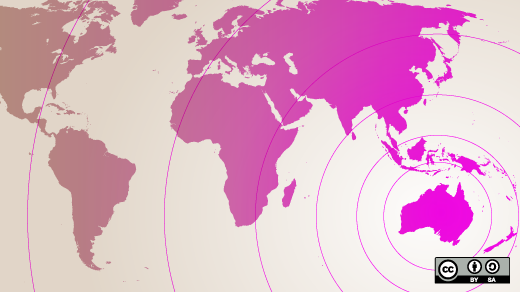Australia is ranked first among English-speaking counties and second in the world in leading a global, digital, open education revolution. Australia follows closely behind top-ranked South Korea –a nation with a bold policy goal of all textbooks and the entire school curriculum available in digital formats by 2015. In February 2012, the Australian government released a new version of their My School website. Users can now search nearly 10,000 Australian schools for statistical information and other details on a particular school, or to compare similar schools. The website provides a range of measures, including the National Assessment Program for Literacy and Numeracy, to help parents with school enrollment.
For years the Australian government has been creating a world-class digital infrastructure with opportunities for all Australians to benefit from a digital economy. It is working with the publishing, copyright, digital content, and creative industries with two key initiatives: the National Broadband Network and the Digital Education Revolution. The Australian government has invested over AUD $2.4 billion (US $2.56 billion) to support these initiatives.
The aim of the Digital Education Revolution is to prepare students to live and work in a digital world. In February 2012, Australian Minister for School Education Peter Garrett announced the country’s goal to provide a computer for every senior high school student. The program involves federal, state, and local government agencies teaming with educational institutions to support online learning and high-speed, fast-access broadband communication. Other initiatives include offering more than 12,000 free digital curriculum resources for use in all Australian schools.
Moodle is playing role in increasing Australia’s standing as a leader of global digital education. While proprietary and patent systems are still prevalent in Australia, the government has revised its policy and now allows Australian agencies to consider open source software as a viable option. As a result, Moodle is widely used in Australia. It was created and developed by Australian Martin Dougiamas, a distance learner located in remote Western Australia, for whom the nearest school was a thousand kilometers from home. Belmont City College in Perth, Western Australia offers a case study on how schools can implement Moodle in a short time and have a positive impact on the teachers, staff, and students.
The Australian Service for Knowledge of Open Source Software (ASK-OSS) is also helping increase Australia’s standing as a leader in global digital education. It provides a national focal point for advice, management, governance, storage, and dissemination of open source software (OSS). In 2004, Grant High School in Mount Gambier, South Australia took part in an ASK-OSS research trial using open source and observing its effects in secondary education. Cost savings was a major motivating factor for the research trial, but the philosophy underpinning the open source movement matched the teaching and learning fostered at the school. This philosophical match was another factor in the study and the school’s decision to move away from proprietary products. Grant High School has since become a case study showing how schools could embrace open source and achieve educational goals. Since the study, Grant High School students have been editing videos with Lightworks and creating traditional hand-drawn animations (cartoons) with Pencil.







8 Comments